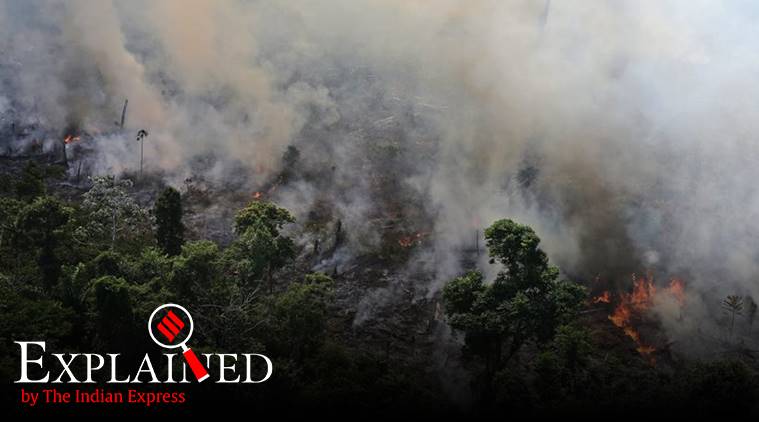Telling numbers: Counting Amazon fires, assessing forest lost
In the three months that followed, 28,000 locals participated in the weekly clean-up drive. According to district records, 19,300 water hyacinths and 8,440 plastic articles were removed from the 'river-turned-nullah'.
 More than 74,000 fires have been recorded by the Brazilian Space Research Agency (INPE) between January and August (Reuters Photo)
More than 74,000 fires have been recorded by the Brazilian Space Research Agency (INPE) between January and August (Reuters Photo)
AS FIRES rage in the Amazon rainforest, alarming the world and finally prompting Brazil President Jair Bolsonaro to deploy firefighting troops, various agencies have been assessing the scale of the disaster. They have been using several metrics — the number of fires, the area likely affected, and the extent of forest lost over the years. The implications are immense as the rainforest contributes 20% of the oxygen in the atmosphere, stores over 450 tonnes carbon per hectare, and plays a vital role in the global water cycle.
Number of fires
More than 74,000 fires have been recorded by the Brazilian Space Research Agency (INPE) between January and August, BBC reported. There has been an 84 per cent increase in the number of fires compared with the same period in 2018. Most of these fires have been in the Amazon region. In the region, the number of fires this year is 35% higher than the corresponding eight-month average since 2010.

Area deforested
According to scientists from the University of Maryland quoted by The New York Times, most of the fires are on agricultural land where the forest had already been cleared. “Most of this is land use that have replaced rain forest,” The NYT quoted Matthew Hansen of the University a saying.
Amazon deforestation began in earnest in the 1970s, reaching its peak rate at the end of the 1990s and the start of the 2000s. In 2004, about 28,000 sq km of forest had been cleared in Brazil. Deforestation then slowed down before picking up again in 2014, but it never reached the same level as the previous decade, Reuters reported attributing these numbers to INPE.

- 01
- 02
- 03
- 04
- 05






































